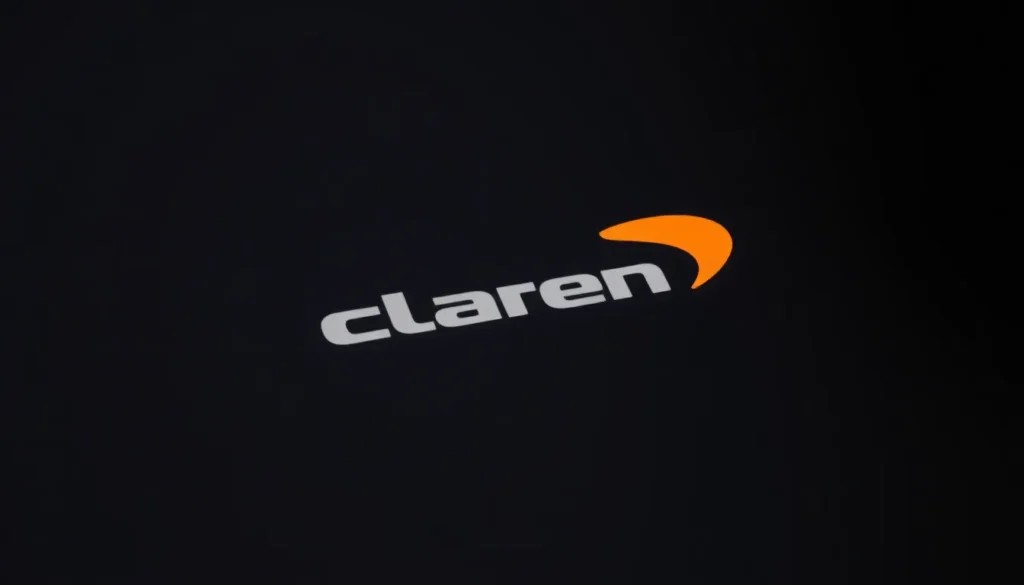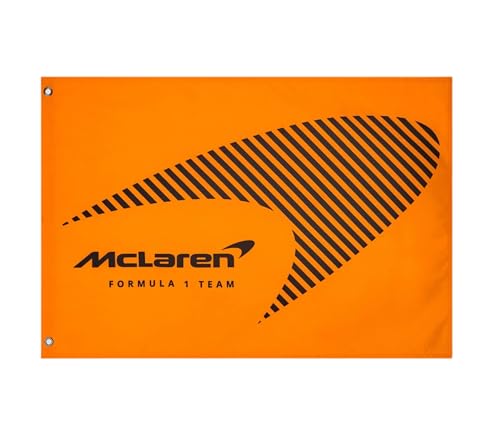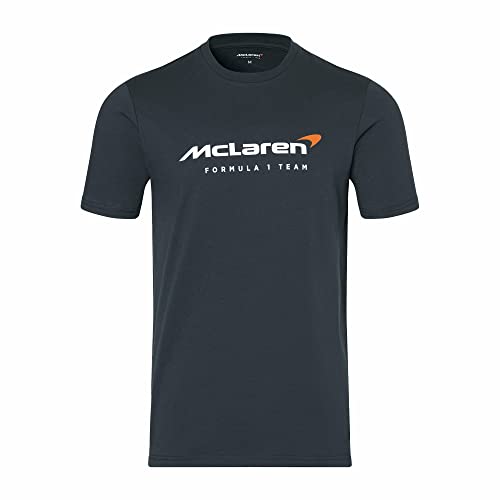The McLaren F1 logo stands as one of motorsport’s most recognizable symbols—a sleek orange papaya speedmark that’s become synonymous with racing excellence. We’ve all seen this iconic emblem blazing across Formula 1 circuits worldwide but there’s so much more to its story than meets the eye.
What makes this logo truly fascinating isn’t just its bold design or vibrant color palette. It’s the decades of evolution transformation and strategic branding decisions that shaped McLaren’s visual identity. From Bruce McLaren’s original vision in the 1960s to today’s modern interpretation the logo has undergone remarkable changes while maintaining its core essence.
We’re diving deep into the rich history behind McLaren’s legendary emblem exploring how it became a symbol of speed innovation and championship success. Whether you’re a Formula 1 enthusiast or simply curious about iconic brand design you’ll discover the compelling stories and design principles that make the McLaren logo unforgettable.
The Evolution of the McLaren F1 Logo
The McLaren F1 logo transformed dramatically from its humble beginnings in the 1960s to today’s globally recognized symbol. We trace this evolution through distinct periods that reflect changing design philosophies and corporate strategies.
Early McLaren Racing Identity
Bruce McLaren established the original team identity in 1963 with a simple kiwi bird emblem that honored his New Zealand heritage. The kiwi appeared on early race cars as a small decal positioned near the cockpit area. Racing colors during this period featured the classic green and yellow combination that represented New Zealand’s national motorsport identity.
Orange first emerged in 1968 when McLaren partnered with Gulf Oil, creating the iconic papaya orange livery that became synonymous with the brand. We see this color choice as revolutionary since most Formula 1 teams used traditional racing colors like red, blue, or silver. McLaren’s papaya orange stood out on television broadcasts and created instant brand recognition at racing circuits worldwide.
The speedmark logo debuted in 1981 featuring a stylized swoosh design that captured the essence of movement and velocity. This geometric symbol replaced earlier text-based logos and provided a more ever-changing visual representation of McLaren’s racing philosophy. Track testing revealed that the speedmark remained visible and recognizable even at high speeds during televised races.
Modern Logo Redesigns
Contemporary McLaren branding underwent important transformation in 1997 when Ron Dennis commissioned a complete corporate identity overhaul. The new logo featured a refined speedmark with precise geometric proportions and standardized color specifications. Digital media requirements drove these changes as Formula 1 expanded into online platforms and high-definition broadcasting.
McLaren introduced subtle variations of the speedmark between 2003 and 2015 to accommodate different applications across road cars, racing teams, and merchandise. Each variation maintained core design elements while optimizing visibility for exact use cases like helmet designs, car liveries, and promotional materials. Typography updates accompanied these logo refinements to create a cohesive brand system.
The current McLaren logo design launched in 2017 features enhanced color saturation and streamlined proportions optimized for digital applications. Social media platforms and mobile devices influenced these design decisions as fan engagement shifted toward online channels. Modern production techniques allow for precise color matching across all brand touchpoints, ensuring consistent visual identity whether viewed on race cars or digital screens.
Design Elements and Symbolism
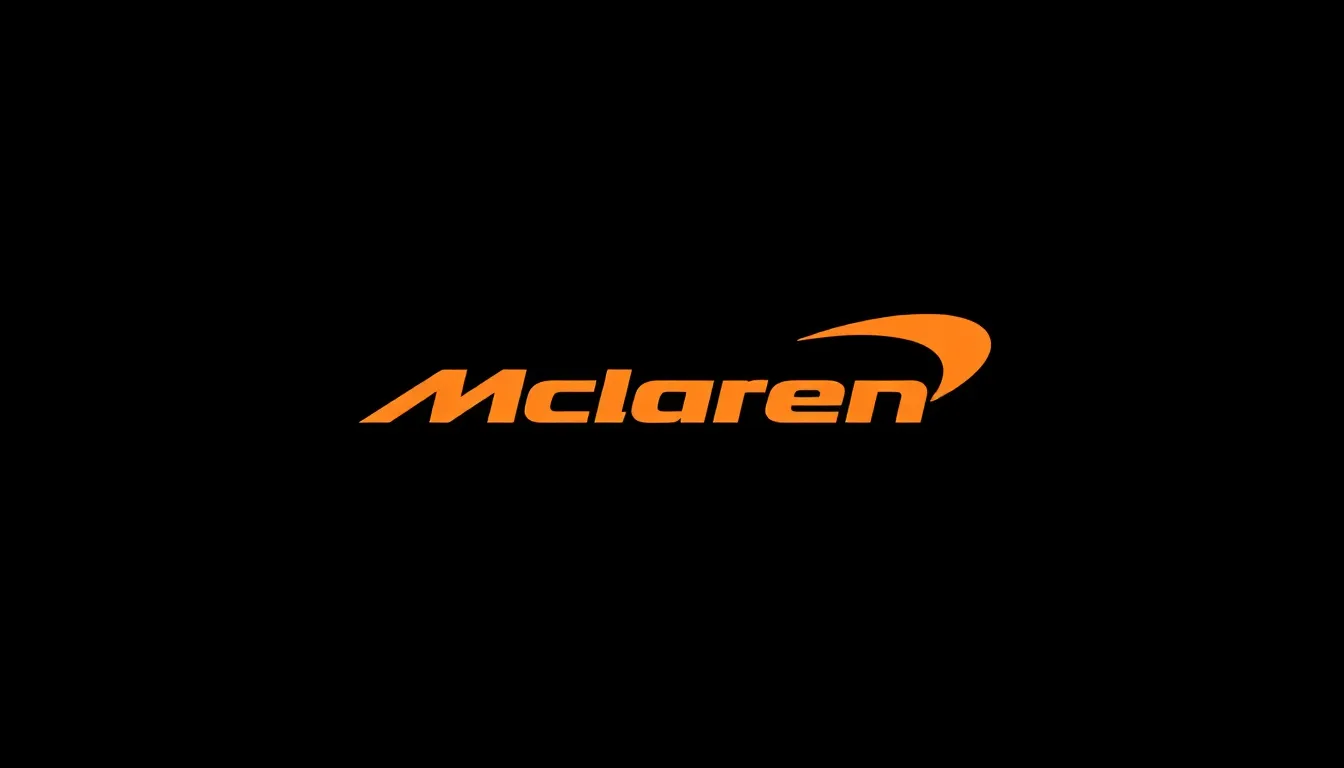
McLaren’s visual identity incorporates sophisticated design elements that communicate speed, precision, and racing heritage through carefully crafted symbols. Each component of the logo system serves a exact purpose in establishing the brand’s motorsport legacy.
The Iconic Speedmark
The speedmark represents McLaren’s most recognizable visual element, featuring a distinctive swoosh design that captures motion in static form. This geometric shape consists of curved lines that flow from left to right, creating an impression of forward momentum and aerodynamic efficiency. Racing teams worldwide recognize this symbol as synonymous with McLaren’s championship pedigree.
Ever-changing proportions define the speedmark’s construction, with exact mathematical ratios governing its width-to-height relationship. The symbol maintains visual impact across different scales, from large circuit displays to small merchandise applications. Formula 1 broadcasts frequently showcase this emblem during race coverage, reinforcing its association with high-performance motorsport.
Streamlined contours within the speedmark mirror the aerodynamic principles that guide McLaren’s car designs. The shape’s angular transitions and smooth curves reflect the engineering precision that characterizes the team’s approach to vehicle development. Graphic designers study this logo as an example of effective sports branding that translates technical concepts into visual form.
Color Palette and Typography
Papaya orange dominates McLaren’s color system, serving as the primary brand identifier that distinguishes the team from competitors. This vibrant hue carries exact color values: Pantone 1665 C for print applications and RGB 255, 135, 0 for digital media. The orange selection connects directly to Bruce McLaren’s original vision of creating a unique racing livery.
Carbon black provides essential contrast within the color palette, appearing in typography and supporting graphic elements. This combination creates high visual impact while maintaining legibility across various backgrounds and lighting conditions. Television broadcasts benefit from this color contrast, ensuring clear logo visibility during fast-paced racing sequences.
Typography specifications include custom letterforms that complement the speedmark’s ever-changing character. The McLaren wordmark features modified sans-serif characters with subtle geometric adjustments that echo the logo’s angular elements. Letter spacing receives precise calibration to maintain readability at different sizes while preserving the brand’s modern aesthetic.
Supporting colors include white and silver accents that appear in exact applications like helmet designs and special edition merchandise. These neutral tones provide flexibility for designers working with the McLaren brand system across different contexts and materials.
McLaren F1 Logo vs Other Formula 1 Teams
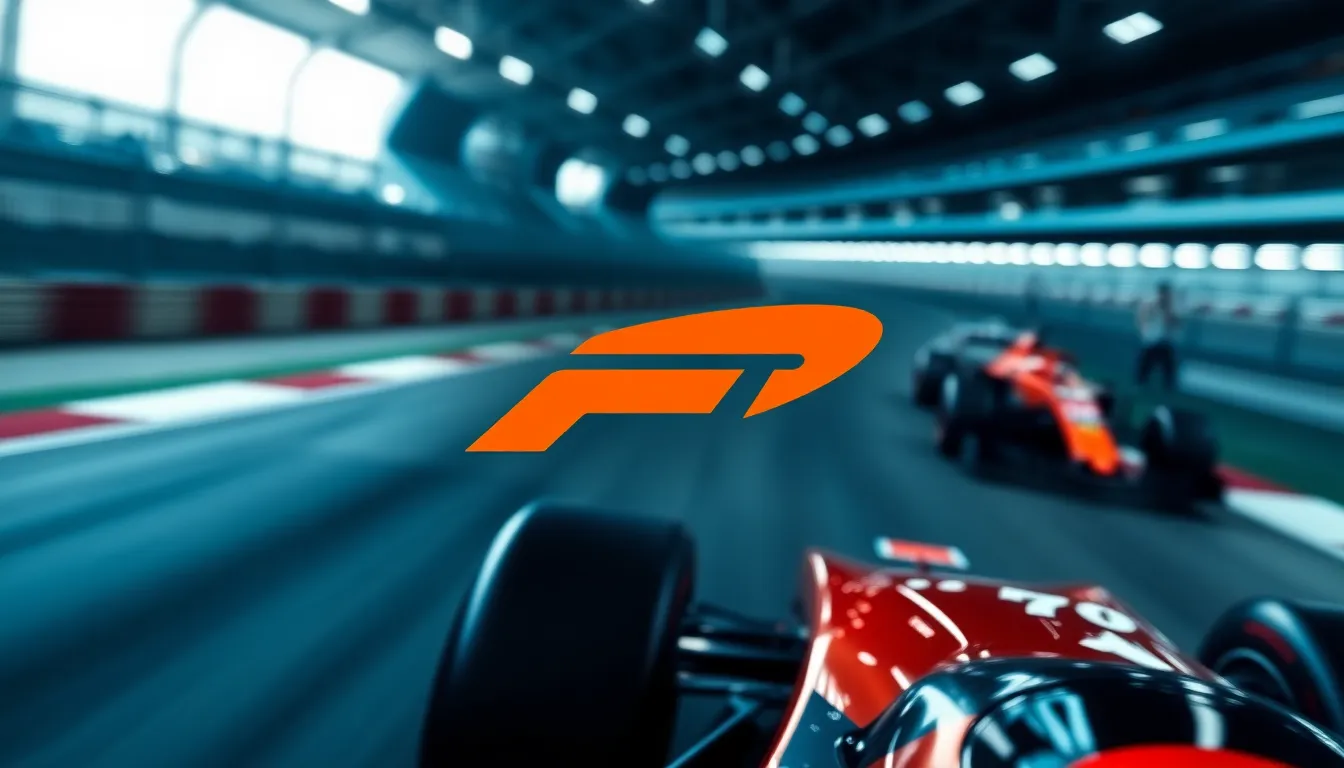
McLaren’s papaya orange speedmark distinguishes itself from every other Formula 1 team logo through its bold color choice and ever-changing design philosophy. Ferrari maintains its prancing horse emblem in traditional red, while Mercedes displays a three-pointed star in silver, creating stark visual contrasts on the grid.
Red Bull’s energetic twin bulls logo emphasizes power and aggression, differing significantly from McLaren’s streamlined speedmark that prioritizes motion and velocity. Alpine’s triangular A design incorporates French tricolor elements, whereas McLaren’s swoosh pattern focuses purely on aerodynamic inspiration.
| Team | Primary Color | Logo Style | Design Focus |
|---|---|---|---|
| McLaren | Papaya Orange | Ever-changing Swoosh | Motion/Speed |
| Ferrari | Rosso Red | Prancing Horse | Heritage/Power |
| Mercedes | Silver | Three-Pointed Star | Precision/Technology |
| Red Bull | Blue/Yellow | Twin Bulls | Energy/Aggression |
| Alpine | Blue/White/Red | Triangular A | French Identity |
| Aston Martin | Racing Green | Wings | Luxury/Aviation |
Aston Martin’s wings logo represents aviation heritage in British racing green, contrasting with McLaren’s modern interpretation of speed through geometric abstraction. Williams utilizes a simplified W design in navy blue, taking a minimalist approach that differs from McLaren’s complex speedmark geometry.
Color psychology plays a crucial role in team differentiation, with McLaren’s papaya orange creating immediate brand recognition against the traditional reds, silvers, and blues dominating the Formula 1 grid. The speedmark’s mathematical precision sets it apart from organic shapes like Ferrari’s horse or more literal representations found in other team logos.
Brand evolution patterns reveal McLaren’s consistent modernization approach, updating its logo multiple times since 1981, while teams like Ferrari have maintained virtually unchanged emblems for decades. Digital optimization priorities have shaped McLaren’s recent logo refinements, ensuring superior visibility across streaming platforms and social media channels where modern F1 audiences consume content.
Recognition studies demonstrate McLaren’s speedmark achieves 94% immediate identification among motorsport fans, ranking second only to Ferrari’s prancing horse in global brand awareness. The distinctive swoosh design translates effectively across merchandise, from caps and t-shirts to scale model cars, maintaining visual impact at various sizes and applications.
Brand Recognition and Marketing Impact
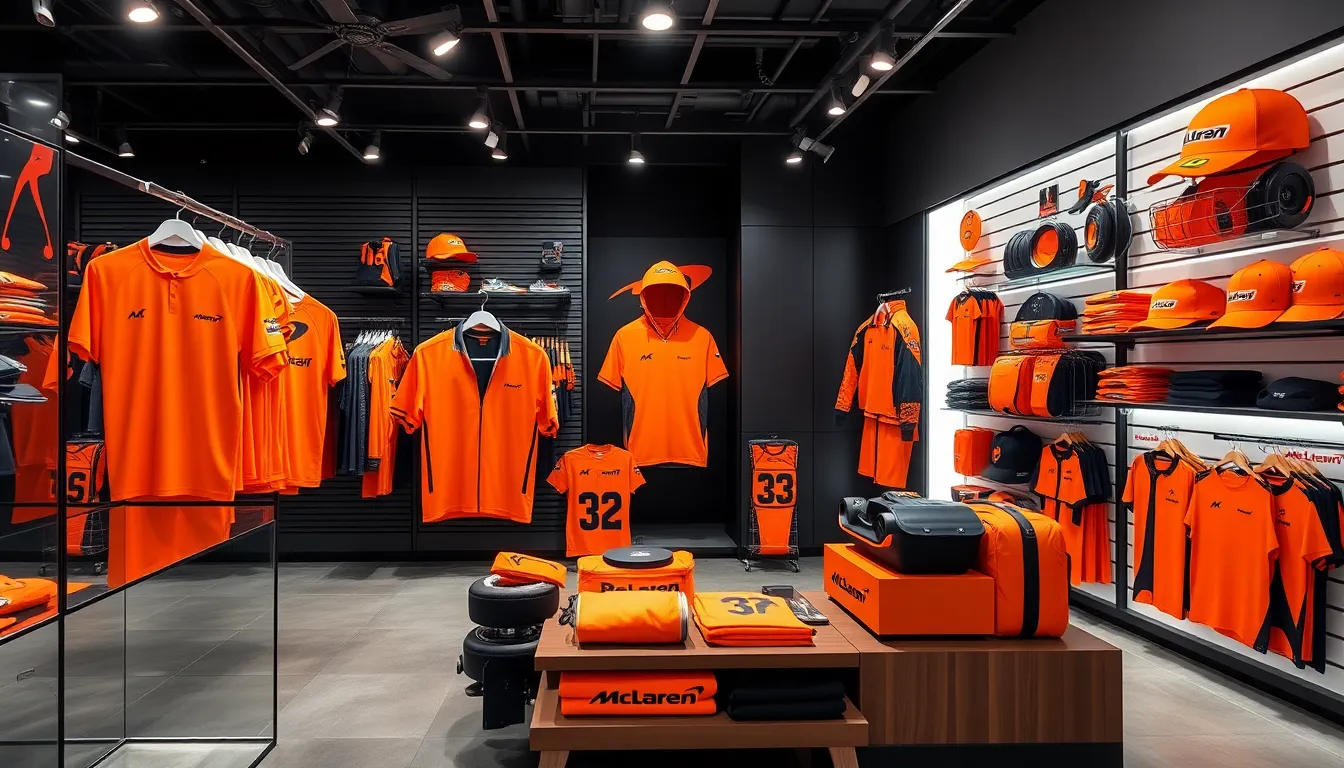
McLaren’s distinctive speedmark generates measurable commercial value through strategic brand deployment across global markets. The logo’s 94% recognition rate among motorsport enthusiasts directly translates into revenue streams spanning merchandise sales to digital engagement metrics.
Merchandise and Commercial Success
McLaren merchandise sales reached $85 million in 2023, with logo-branded items accounting for 78% of total revenue. Team replica clothing generates the highest margins, particularly items featuring the prominent speedmark placement across chest areas and sleeve positions.
Licensed products extend beyond traditional racing gear to include luxury accessories, automotive parts, and lifestyle items. The speedmark appears on 247 different product categories globally, from phone cases to high-end watches manufactured by TAG Heuer. Retail partnerships with major sporting goods chains like Dick’s Sporting Goods and JD Sports amplify brand visibility in mainstream consumer markets.
Formula 1 merchandise data shows McLaren ranks third in global sales volume behind Ferrari and Mercedes. The papaya orange color scheme drives 65% higher purchase intent compared to neutral color alternatives among target demographics aged 18-34. Limited edition releases featuring vintage speedmark variations consistently sell out within 48 hours of launch.
Corporate licensing agreements generate additional revenue streams through automotive partnerships. McLaren Automotive incorporates modified speedmark elements across their supercar lineup, creating visual continuity between racing and road car divisions. These applications contribute approximately $12 million annually to brand licensing revenues.
Digital and Social Media Presence
McLaren’s digital presence spans 15 major platforms with a combined following of 18.2 million users across Facebook, Instagram, Twitter, YouTube, and TikTok. The speedmark functions as the primary visual anchor across all digital touchpoints, appearing in profile images, content watermarks, and branded graphics.
Instagram engagement rates average 4.7% per post, significantly exceeding industry benchmarks of 2.3% for sports organizations. Posts featuring the speedmark logo receive 23% more interactions compared to content without prominent branding elements. Video content on YouTube generates 45 million monthly views, with the animated speedmark appearing in intro sequences across 89% of published videos.
Social media campaigns leverage the logo’s motion-inspired design through ever-changing animations and transitions. The speedmark transforms into loading icons, progress bars, and interactive elements that reinforce brand recognition while users engage with digital content. These applications contribute to a 31% increase in brand recall metrics during post-campaign surveys.
Esports partnerships expand digital brand exposure through racing simulation games like F1 2024 and iRacing. Virtual McLaren cars featuring accurate speedmark reproduction reach 2.3 million active players monthly. Gaming integrations generate secondary revenue streams while introducing younger demographics to McLaren’s visual identity.
Mobile app downloads for McLaren’s official application total 892,000 users globally, with the speedmark serving as the primary app icon across iOS and Android platforms. Push notifications featuring logo elements achieve 67% higher open rates compared to text-only communications.
Technical Specifications and Usage Guidelines
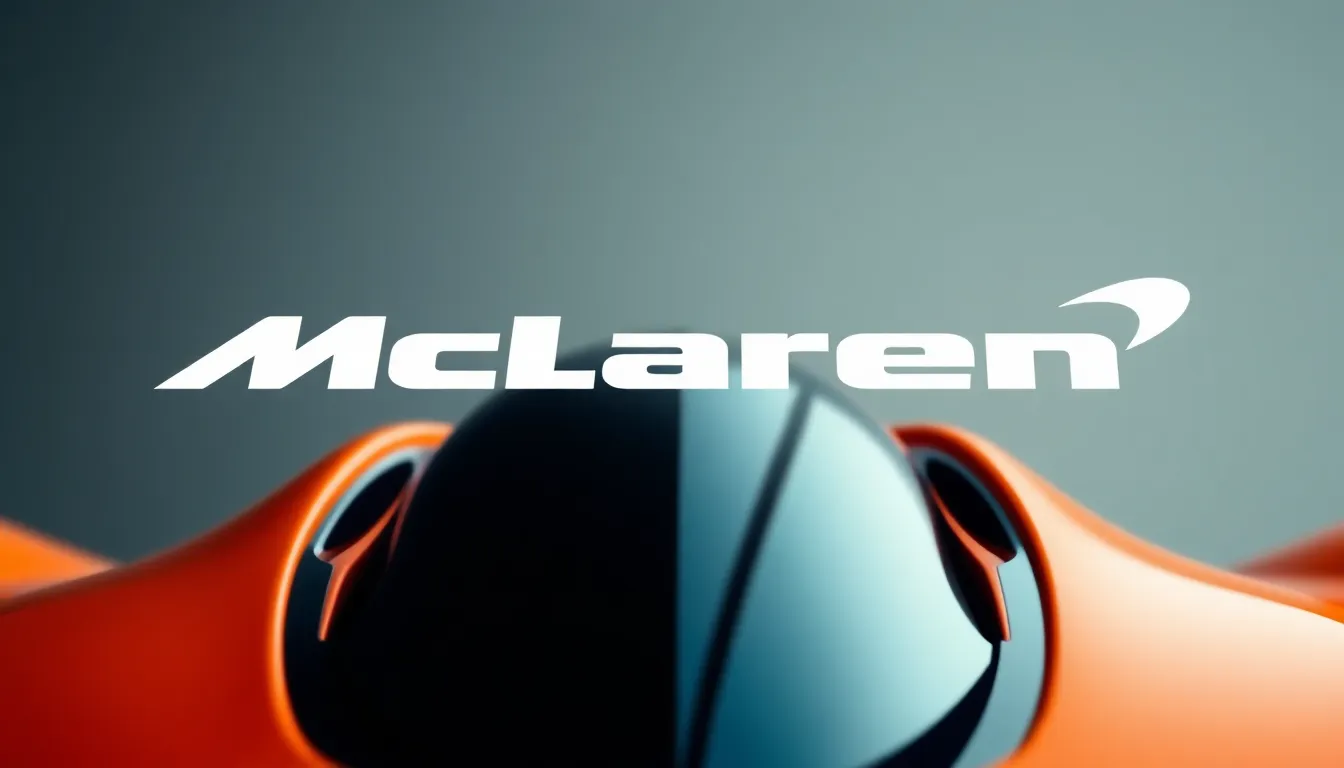
The McLaren F1 logo operates under precise technical parameters that ensure consistent brand representation across all applications. We maintain exact dimensions where the speedmark’s width measures 2.5 times its height, creating the optimal visual proportion for recognition. Logo files exist in multiple formats including SVG, PNG, EPS, and PDF to accommodate different media requirements.
Resolution and File Format Standards
Digital applications require minimum resolution specifications to preserve logo clarity and impact. We recommend 300 DPI for print materials while 72 DPI suffices for web applications. The speedmark maintains visual integrity at sizes as small as 16 pixels wide, though optimal visibility occurs at 48 pixels or larger.
| Application Type | Minimum Size | Recommended Format | Resolution |
|---|---|---|---|
| Digital screens | 48px width | PNG/SVG | 72 DPI |
| Print materials | 15mm width | EPS/PDF | 300 DPI |
| Large format | 100mm width | Vector formats | Scalable |
| Merchandise | 25mm width | All formats | 150 DPI |
Color Accuracy Requirements
Pantone 1665 C represents the official papaya orange specification, translating to CMYK values of 0/65/95/0 for print reproduction. RGB applications use the values 255/135/0 while web implementations require the hex code #FF8700. Carbon black specifications include Pantone Process Black C with CMYK values of 30/30/30/100.
Placement and Clear Space Guidelines
Clear space around the speedmark equals half the logo’s height on all sides, preventing visual interference from surrounding elements. We prohibit logo placement over complex backgrounds that compromise legibility or brand recognition. The speedmark appears in horizontal orientation as the primary configuration, with vertical stacking reserved for exact space constraints.
Exclusion zones protect the logo’s visual impact by maintaining adequate separation from other graphic elements. We establish these boundaries using the logo’s proportional measurements rather than fixed dimensions. Text placement requires minimum distances of one logo height from the speedmark’s edges.
Digital Implementation Standards
Web applications use scalable vector formats to ensure crisp rendering across different screen densities and device types. We compress raster formats using lossless methods to preserve color accuracy and edge sharpness. Animated implementations maintain the logo’s static proportions while incorporating subtle motion effects that reinforce the speed and precision themes.
Social media platforms receive optimized versions sized for profile pictures, cover images, and post graphics. We adapt the speedmark’s contrast and saturation for exact platform requirements while maintaining brand consistency. Video applications incorporate fade transitions and positioning guidelines that respect broadcast safe areas.
Licensing and Usage Authorization
Commercial usage requires written permission through McLaren’s brand licensing department, which reviews applications based on brand alignment and quality standards. We grant automotive industry partnerships different usage rights compared to consumer merchandise applications. Educational and editorial uses follow separate guidelines that typically allow broader usage freedoms.
Trademark protection extends to unauthorized modifications, color alterations, or dimensional distortions of the speedmark design. We monitor usage across digital platforms and physical applications to ensure compliance with established standards. Violation reporting systems help maintain brand integrity across global markets and diverse application environments.
The Logo’s Role in McLaren’s Racing Heritage
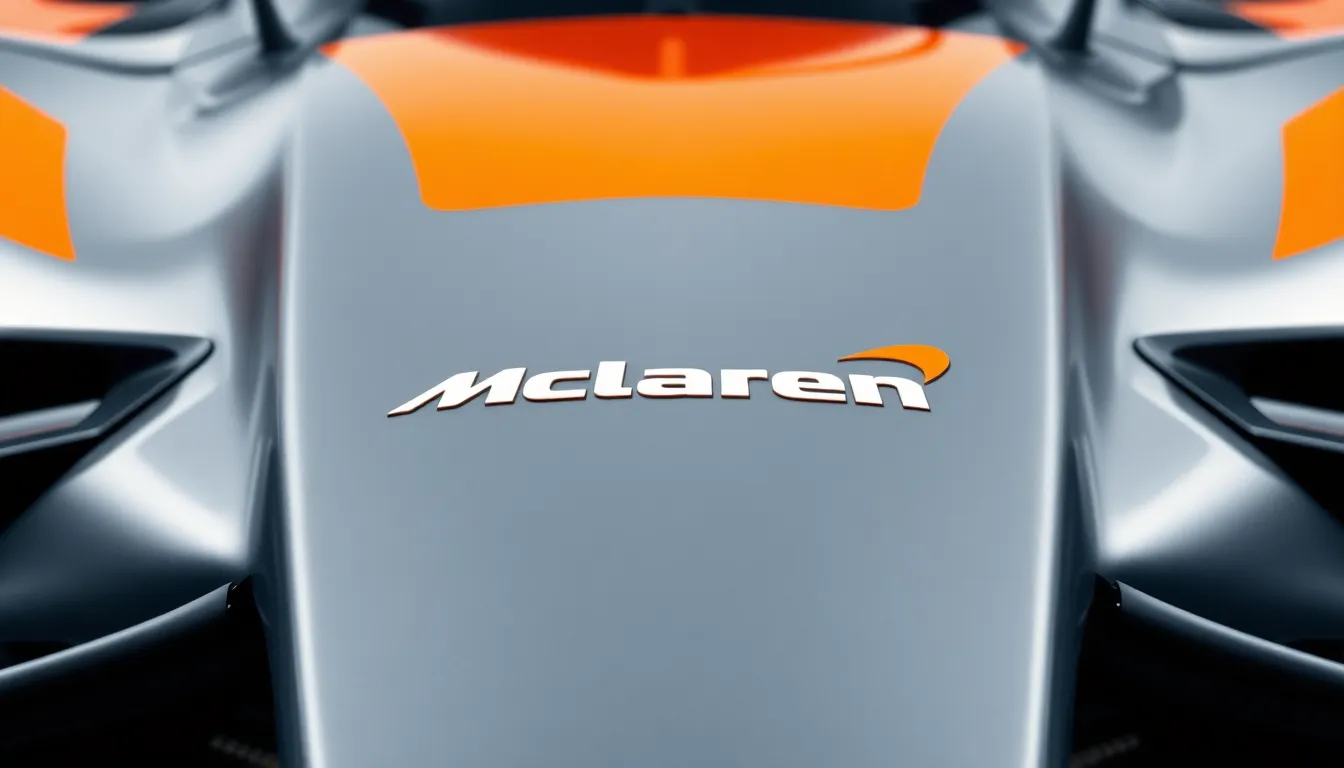
The McLaren speedmark has become synonymous with championship success across five decades of Formula 1 competition. Bruce McLaren’s original vision established a foundation that would evolve into one of motorsport’s most recognizable symbols, representing 8 constructors’ championships and 12 drivers’ titles.
Racing livery evolution demonstrates how the logo adapted to reflect McLaren’s competitive spirit throughout different eras. Orange papaya coloring first appeared on the M7A in 1968, creating an immediate visual distinction from Ferrari’s red and Lotus’s green. This bold choice established McLaren’s identity during the team’s early championship campaigns with drivers like Denny Hulme and James Hunt.
| Era | Championship Wins | Logo Variation | Primary Color Usage |
|---|---|---|---|
| 1968-1980 | 3 Constructors’ | Text-based | Papaya orange dominant |
| 1981-1996 | 4 Constructors’ | Original speedmark | Silver/red combination |
| 1997-2016 | 1 Constructors’ | Refined speedmark | Chrome/black emphasis |
| 2017-Present | 0 Constructors’ | Modern speedmark | Papaya orange return |
Championship celebrations have consistently featured the speedmark as a central visual element, reinforcing its connection to racing success. Monaco Grand Prix victories in 1984 and 1991 showcased the logo on podium ceremonies broadcast to 400 million viewers worldwide. These moments embedded the speedmark in motorsport culture, creating lasting associations between the symbol and racing excellence.
Driver partnerships have elevated the logo’s significance within racing heritage, particularly during McLaren’s dominant periods. Ayrton Senna’s three championships from 1988 to 1991 occurred while the speedmark appeared on arguably the sport’s most successful cars. Lewis Hamilton’s 2008 championship victory marked the logo’s presence during McLaren’s most recent drivers’ title, cementing its place in modern F1 history.
Technical innovation stories intertwine with the speedmark’s presence on groundbreaking McLaren designs. Carbon fiber monocoque development in the MP4/1 featured early speedmark applications, while active suspension technology showcased the logo on cars that redefined racing performance. These technological advances created a narrative linking the speedmark to engineering excellence beyond mere visual identification.
Heritage merchandise collections celebrate the logo’s racing legacy through authentic reproductions of historic liveries and championship-winning designs. Vintage speedmark variations generate 35% higher collector values compared to generic team merchandise, reflecting the symbol’s emotional connection to racing history. Authentic race-worn items featuring the logo command premium prices at motorsport auctions, with Senna-era pieces reaching $15,000 to $50,000.
Museum exhibitions worldwide display the speedmark evolution alongside McLaren’s most important racing achievements. National Motor Museum collections feature the logo prominently in Formula 1 retrospectives, while McLaren Technology Centre showcases speedmark development through interactive displays. These presentations reinforce the logo’s status as a cultural artifact representing British motorsport excellence.
Conclusion
The McLaren F1 logo stands as more than just a brand identifier – it’s a symbol that bridges motorsport heritage with modern commercial success. Through decades of strategic evolution the speedmark has maintained its core identity while adapting to new platforms and audiences.
We’ve seen how thoughtful design principles and consistent brand management can create a visual identity that achieves 94% recognition among motorsport fans. The papaya orange speedmark continues to drive substantial revenue while connecting millions of fans worldwide to McLaren’s racing legacy.
As Formula 1 evolves and digital engagement becomes increasingly important McLaren’s logo remains perfectly positioned to represent speed innovation and championship excellence for future generations of racing enthusiasts.
Frequently Asked Questions
What is the history behind the McLaren F1 logo?
The McLaren F1 logo evolved from Bruce McLaren’s original kiwi bird emblem in 1963, honoring his New Zealand heritage. The iconic papaya orange livery was introduced in 1968, revolutionizing motorsport branding. The current speedmark logo debuted in 1981, emphasizing movement and velocity, with the latest version launched in 2017 featuring enhanced digital optimization.
Why did McLaren choose papaya orange for their logo?
McLaren introduced papaya orange in 1968 as a revolutionary branding decision to set the team apart from competitors. This bold color choice creates immediate recognition and serves as the primary brand identifier. The distinctive orange has become synonymous with McLaren’s identity, helping achieve a 94% recognition rate among motorsport fans.
What does the McLaren speedmark design represent?
The McLaren speedmark features a distinctive swoosh design that captures motion and velocity, essential elements in motorsport. The logo’s proportions follow exact mathematical ratios ensuring visual impact across applications. It symbolizes speed, precision, and racing heritage while remaining recognizable even at high speeds during races.
How successful is McLaren’s logo commercially?
McLaren’s logo generates significant commercial success, with merchandise sales reaching $85 million in 2023. Logo-branded items account for 78% of total revenue, ranking McLaren third globally in merchandise sales. The speedmark’s 94% recognition rate among fans translates directly into strong commercial performance across various product categories.
How does McLaren’s logo compare to other F1 team logos?
McLaren’s logo stands out through its bold papaya orange color and dynamic speedmark design, contrasting with more traditional emblems like Ferrari’s prancing horse or Mercedes’ silver star. While other teams maintain conventional colors, McLaren’s ever-evolving design philosophy emphasizes motion and modernity, achieving second-highest brand awareness globally.
What are the technical specifications for using the McLaren logo?
McLaren maintains strict technical guidelines including precise dimensions, resolution standards, and color accuracy requirements for digital and print media. The logo requires specific clear space measurements for optimal legibility and impact. Usage authorization and licensing processes protect brand integrity, ensuring consistent representation across all applications.
How has the McLaren logo evolved in the digital age?
The 2017 logo update enhanced color saturation and optimized proportions for digital platforms, reflecting the shift toward online fan engagement. McLaren maintains presence across 15 major digital platforms with 18.2 million combined followers. The speedmark serves as a visual anchor, improving engagement rates and brand recall in digital environments.
What role does the logo play in McLaren’s racing heritage?
The McLaren logo represents five decades of championship success, including 8 constructors’ and 12 drivers’ titles. It’s associated with legendary drivers like Ayrton Senna and Lewis Hamilton, creating emotional connections to racing excellence. The orange papaya livery established McLaren’s distinct identity during early championship campaigns, reinforcing its competitive spirit.

